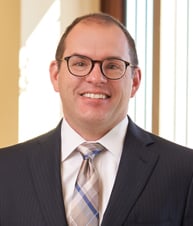AMP Plus, Inc. v. DMF, Inc., No. 2023-1997 (Fed. Cir. (PTAB) Mar. 19, 2025). Opinion by Reyna, joined by Lourie and Bryson.
DMF owns a patent directed to a compact recessed lighting system that can be installed in a standard electrical junction box. AMP Plus, doing business as ELCO Lighting, filed an IPR petition challenging certain claims as anticipated or obvious. The Patent Trial and Appeal Board found claim 17 anticipated but determined that the remaining claims were not shown to be unpatentable. ELCO appealed, and the Federal Circuit affirmed as to all claims except claim 22, which the Board had not explicitly addressed.
On remand, the Board found that claim 22 was not shown to be unpatentable. According to the Board, ELCO’s IPR petition had presented “no analysis” of a limitation in claim 22 concerning “coupl[ing] to electricity from an electrical system of a building in which the compact recessed lighting system is installed.” ELCO again appealed.
The Federal Circuit affirmed. The court agreed with the Board that ELCO’s IPR petition “does not discuss” the claim limitation at issue. The court ruled that “ELCO’s position boils down to an invitation for this court to comb through other sections of its petition and find support for its obviousness argument for [the disputed limitation] of claim 22. ELCO’s position goes too far.” The court explained that “the law of obviousness does not require the court, or the Board, to develop arguments for a limitation that the petition simply did not make.”
Maquet Cardiovascular LLC v. Abiomed Inc., et al., No. 2023-2045 (Fed. Cir. (D. Mass.) Mar. 21, 2025). Opinion by Reyna, joined by Taranto and Cunningham.
Maquet owns a patent related to an intravascular blood pump system for deploying a blood pump to a desired location in a patient’s circulatory system. Maquet sued Abiomed for infringement, and the district court issued a claim construction order construing two sets of claim terms.
First, the district court construed the term “guide mechanism comprising a lumen” to include a negative limitation that the “guidewire lumen is not distal to the cannula.” Second, the court construed terms reciting a “guide wire” to include a negative limitation that the “guide wire does not extend through the free space in between the rotor blades” of a pump. For both sets, the court ruled that Maquet had disavowed claim scope during prosecution of related patents in the same family, thus warranting the negative limitations. Maquet stipulated to noninfringement based on the court’s constructions and appealed.
The Federal Circuit reversed. Addressing the law on disavowal of claim scope, the Federal Circuit reiterated that “a patentee will only be bound to a disavowal that is both ‘clear and unmistakable.’” The court also explained that “the prosecution history of a related patent can be relevant if, for example, it addresses a limitation in common with the patent in suit.” If the limitations at issue “are dissimilar, we generally cannot accept, without more support, that an applicant’s disclaimer with respect to one claim would be equally applicable to another claim.”
Applying these concepts to the first claim term, the Federal Circuit ruled that the claim at issue and the earlier prosecuted claims of the family member were “not sufficiently similar such that the prosecution history of the latter would be relevant when construing the former.” Thus, the district court erred by imparting the negative limitation.
Abiomed argued in the alternative that prosecution disclaimer applies, despite differences in the claim language, when patents share “common subject matter.” The Federal Circuit disagreed, ruling that the law of prosecution disclaimer “does not extend this far, and we make no such extension today.”
Turning to the second set of claim terms, the Federal Circuit ruled that Maquet never made a clear and unmistakable disavowal of claim scope during the prosecution of the related family member. Nothing in the prosecution history, including Maquet’s silence in response to remarks made in the examiner’s notice of allowance, amounted to a clear and unmistakable disavowal of claim scope.
The Federal Circuit also disagreed with Abiomed’s argument that prosecution disclaimer was appropriate because Maquet purportedly later “ratified and adopted the examiner’s statements” when Maquet argued against the institution of IPR petitions challenging the family member patent. The court rejected that argument because Maquet’s “broad and vague statements” in response to Abiomed’s IPR petitions did not amount to a clear and unmistakable disclaimer.
Because the Federal Circuit rejected the district court’s claim constructions, it vacated the stipulated judgment of noninfringement and remanded for further proceedings.
Cambridge Mobile Telematics, Inc. v. Sfara, Inc., No. IPR2024-00952 (Dec. 13, 2024) (designated informative on Mar. 20, 2025). Opinion by Dougal, joined by Kinder. Concurring opinion by Horvath.
Cambridge filed an IPR petition challenging the claims of a patent owned by Sfara. The Patent Trial and Appeal Board denied institution because the Petition failed to comply with 37 C.F.R. § 42.104(b)(3), which the Board explained “mandates that the Petition ‘identify the specific portions of the specification that describe the structure, material, or acts corresponding to each claimed function’” for claim terms arguably subject to means-plus-function construction under 35 U.S.C. § 112(f).
The Board observed that in the district court litigation, Petitioner’s position was that certain “component” terms in the challenged claims should be construed as means-plus-function terms under § 112(f) and were indefinite for failure to identify corresponding structure. In the IPR, by comparison, Petitioner applied the plain and ordinary meaning consistent with Patent Owner’s position in the district court. Patent Owner argued, however, that in the district court it also provided its own means-plus-function construction as an alternative. Patent Owner thus argued that Petitioner should have addressed whether the “component” terms are means-plus-function limitations and that its failure to do so renders the Petition deficient under § 42.104(b)(3). The Board agreed.
In its analysis, the Board noted that in the district court Petitioner had “clearly and emphatically stated that whether the ‘component’ terms are means-plus-function limitations is a dispositive issue for the litigation.” On that backdrop, the Board ruled that “at a minimum, the Petition should have explained why the plain and ordinary meaning of the ‘component’ terms should not apply in this proceeding (why the inconsistent positions are warranted) or set forth an alternative means-plus-function construction.” Thus, the Board denied institution.
Judge Horvath concurred but would have denied institution for a different reason. He explained that he would not deny the Petition for failing to construe the claims or explain why the claims are not means-plus-function claims because “neither rule 104(b)(3) nor the [Consolidated Trial Practice Guide] mandate that a petition must fail when a petitioner fails to satisfy rule 104(b)(3).” He also noted that “Petitioner arguably has satisfied rule 104(b)(3) because Petitioner has stated ‘how the challenged claim is to be construed,’ namely, by giving all terms their plain and ordinary meaning.”
Judge Horvath instead would deny the Petition because all the “component” terms are written in means-plus-function form and the specification fails to disclose sufficient corresponding structure. Thus, he would be “unable to determine what specific prior art structure is needed to meet the limitation” and so would be “unable to determine the merits of the Petition,” warranting denial of institution.

